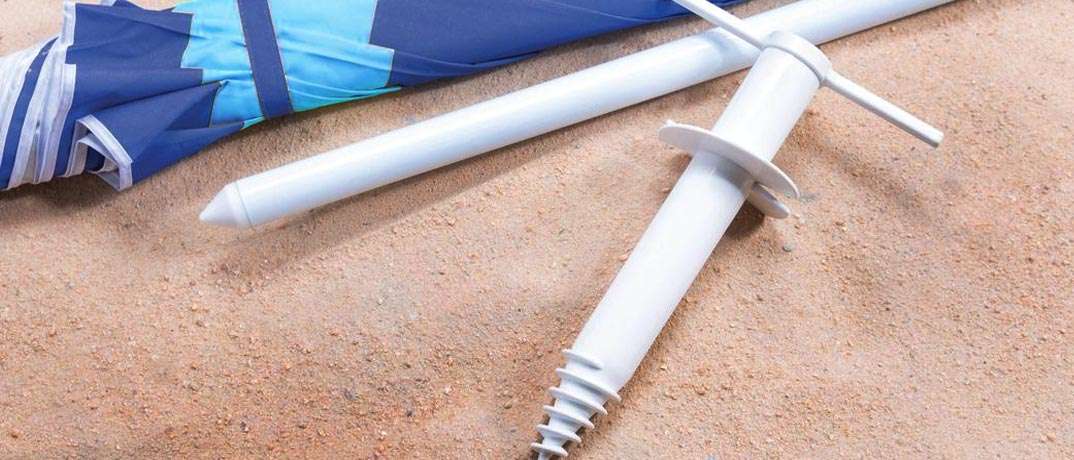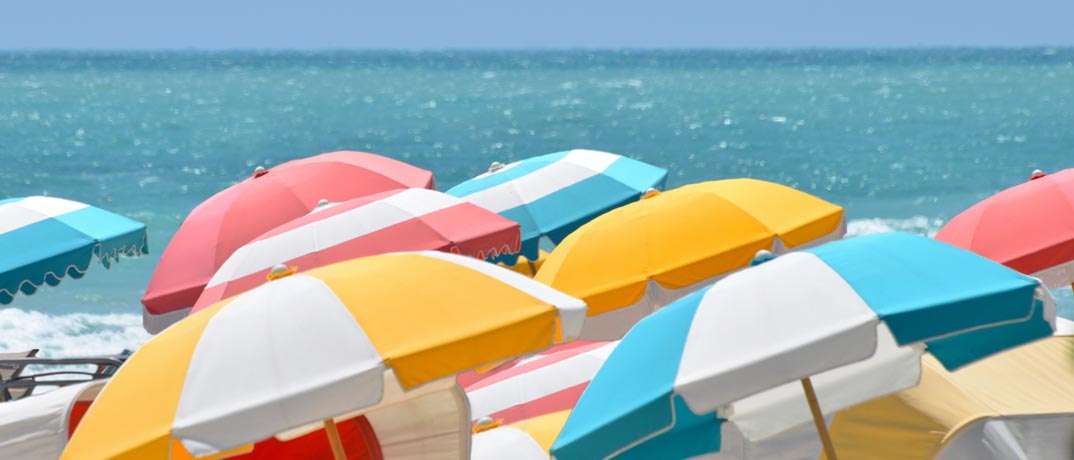A change in wind direction or a sudden gust off the water can quickly turn a beach umbrella from a shady canopy into a flying dagger ready to kill. Although it’s hard to suppress laughter when I see someone frantically chasing their flying umbrella down the beach, I know how scary it can actually be. That’s because I’ve been known to just jab an umbrella pole into the sand a couple times and walk away from it, only to watch it ripped from the ground and sent airborne.
In order to avoid potential embarrassment at best, or, at worst, a trip to the emergency room for the unsuspecting recipient of your flying weapon, follow these tips so that your beach umbrella is as secure as possible.
Use a Durable Umbrella

Choose an umbrella that is durable and has a little heft to it. You don’t want it so heavy that carrying it is a burden, but in my experience, cheap, lightweight plastic umbrellas are more likely to go flying, even in a light breeze.
Use an Umbrella Anchor

Consider an umbrella anchor. After I sent a couple umbrellas into the atmosphere, I purchase an inexpensive plastic anchor that has a corkscrew end. Simply turn this into the sand and let the threaded stem provide some extra grip and security.
Bury it Deep

If you aren’t using a corkscrew anchor, don’t just repeatedly jab the sand with the end of the umbrella like it’s Sharon Stone’s ice pick from Basic Instinct. You’ll get the pole deepest and most secure by rocking it from side to side. If you have a small shovel, that can help you dig deep enough. I’ve even seen someone bring a garden auger drill bit and a cordless drill to the beach to screw out a deep hole. The deeper you get the pole, the more secure your umbrella. A good rule of thumb is about 1/3 the height of the pole. Put a little effort into it, please, for all our safety.
Tilt Toward the Wind

Always tilt the umbrella toward the wind. This will allow the wind to push it into the ground instead of pulling it out. This is typically one of the main reasons for AWOL beach umbrellas. Be aware that wind direction changes quite often, and you may have to readjust the position of your umbrella so that it is facing the wind.
Finishing Touches with a Mound and Water

Given my flying umbrella track record, I like a little extra security. After doing aforementioned tips, I then use some sand to build an extra mound around the base. I grab a pail of ocean water and pour it around the base to firm up and fill in gaps. It’s not very scientific, but it gives me peace of mind, and I haven’t lost another umbrella since.
I learned the art of securing my umbrellas through the pains of trial and error, but hopefully it can save you some trouble on breezy days at the beach. One more thing – be sure to set up your umbrella is only up to seven and a half feet in diameter and is in line with the established umbrella line so as not to block the lifeguard chairs.
Beachfront Condos

Keep from lugging the umbrella around longer than you need to by staying at a condo rental that’s right on the beach! Our North Myrtle Beach condo rentals give you beautiful views of the ocean and direct access to the sand so you can get out there early, pick the best spot, and plant your umbrella to relax the whole day.




